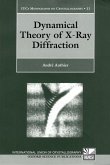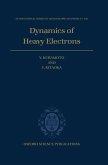This comprehensive text is addressed at scientists who are interested in considering crystalline materials from a non-conventional but inspiring viewpoint. The book contains the first systematic theoretical and illustrative presentation of crystalline materials built from modules (including twinning) which determine and tune basic and technological properties.
This is the first book to provide a comprehensive treatment of theories and applications in the rapidly expanding field of the crystallography of modular materials. Molecules are the natural modules from which molecular crystalline structures are built. Most inorganic structures, however, are infinite arrays of atoms and some kinds of surrogate modules, e.g. co-ordination polyhedra, are usually used to describe them. In recent years the attention has been focused on complex modules
as the basis for a systematic description of polytypes and homologous/polysomatic series (modular structures). This representation is applied to the modelling of unknown structures and understanding nanoscale defects and intergrowths in materials. The Order/Disorder (OD) theory is fundamental to
developing a systematic theory of polytypism, dealing with those structures based on both ordered and disordered stacking of one or more layers. Twinning at both unit-cell and micro-scale, together with disorder, causes many problems, "demons", for computer-based methods of crystal structure determination. This book develops the theory of twinning with the inclusion of worked examples, converting the "demons" into useful indicators for unravelling crystal structure. In spite of the increasing
use of the concepts of modular crystallography for characterising, understanding and tailoring technological crystalline materials, this is the first book to offer a unified treatment of the results, which are spread across many different journals and original papers published over the last twenty
years.
This is the first book to provide a comprehensive treatment of theories and applications in the rapidly expanding field of the crystallography of modular materials. Molecules are the natural modules from which molecular crystalline structures are built. Most inorganic structures, however, are infinite arrays of atoms and some kinds of surrogate modules, e.g. co-ordination polyhedra, are usually used to describe them. In recent years the attention has been focused on complex modules
as the basis for a systematic description of polytypes and homologous/polysomatic series (modular structures). This representation is applied to the modelling of unknown structures and understanding nanoscale defects and intergrowths in materials. The Order/Disorder (OD) theory is fundamental to
developing a systematic theory of polytypism, dealing with those structures based on both ordered and disordered stacking of one or more layers. Twinning at both unit-cell and micro-scale, together with disorder, causes many problems, "demons", for computer-based methods of crystal structure determination. This book develops the theory of twinning with the inclusion of worked examples, converting the "demons" into useful indicators for unravelling crystal structure. In spite of the increasing
use of the concepts of modular crystallography for characterising, understanding and tailoring technological crystalline materials, this is the first book to offer a unified treatment of the results, which are spread across many different journals and original papers published over the last twenty
years.








